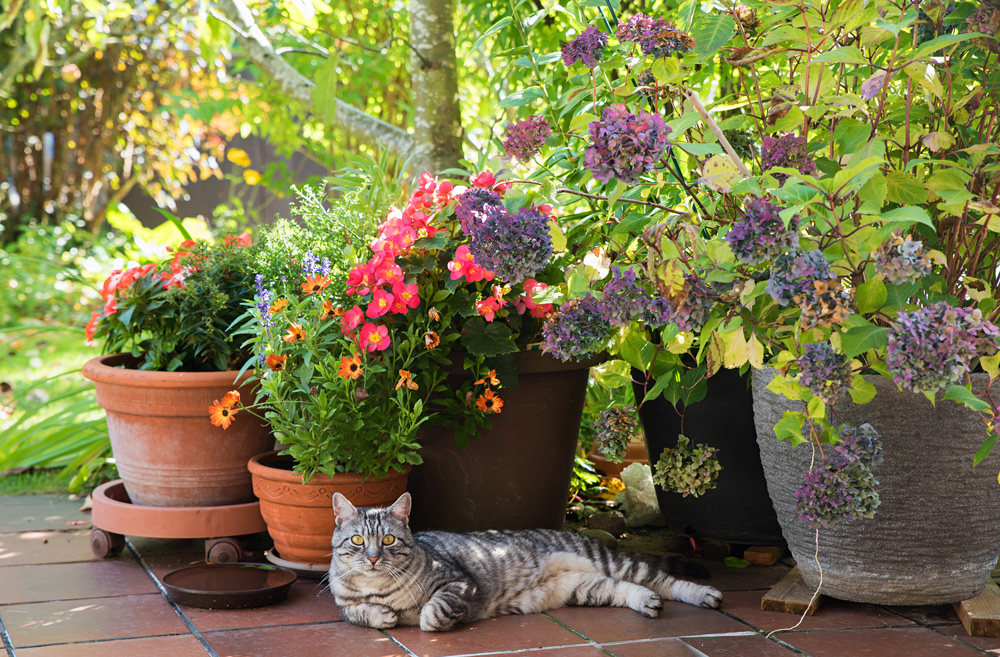As the warmer days of summer approach, many of us are seeking solace in our gardens, creating vibrant spaces full of blooming flowers, lush greenery, and soothing sounds of nature. For pet owners, ensuring their furry friends can safely enjoy their yards is a top priority. Here are some tips to help you create a pet-friendly summer garden that will not only delight your senses but also keep your pet happy and healthy.
Choose Pet-friendly Plants
The first step to a pet-safe garden is choosing plants that are not poisonous to animals. Some common plants can be harmful if ingested by pets, causing anything from mild discomfort to serious illness. Choose pet-friendly plants such as marigolds, sunflowers, and pet grass. Be sure to research the toxicity levels of each plant to ensure a safe environment for your pet.
Create a Special Pet Area
Give your pets their own place in the garden. This could be a shady corner with comfortable bedding or a special pet-friendly patch of grass. Demarcated areas help manage their activities and minimize the risk of accidental exposure to harmful plants or substances.
Avoid Harmful Chemicals
Many garden products contain chemicals that can be harmful to pets. Pesticides, fertilizers, and certain mulches can pose risks if ingested or come into contact with animals. Choose natural alternatives or pet-safe products to maintain your garden without endangering your pet’s health.
Safe Water Supplies
If your yard has a pond, fountain, or other water feature, take precautions to keep your pets safe. Make sure the water is clean and free of harmful algae. If your water feature is deep, consider adding a barrier or fence to prevent accidental falls.
Provide Shade and Water
Pets, just like people, need a cool place to stay during the hot summer months. Use pet-friendly trees to create shaded areas, or place umbrellas where pets can relax. Always have a clean and easily accessible water source to stay hydrated.
Regular Veterinary Checks
Before letting your pets roam free in the garden, make sure they have up-to-date vaccinations and have had a recent veterinary check. This helps detect potential health problems early and ensures your pet is fit for the outdoors.
Embrace Pet-friendly Toys and Activities
Make your garden an attractive space for your pet by introducing toys and activities that appeal to their instincts and energy levels. Install a scratching post, climbing frame, or even a sandbox for your cat. For dogs, consider setting up agility classes or hiding treats in educational toys to stimulate their minds and keep them active. Pets that are well entertained are less likely to venture into potentially dangerous areas of the garden.
Pay Attention to the Temperature
High temperatures can pose risks to pets, especially during the hot summer months. Pay attention to the temperature of the ground, as hot surfaces such as asphalt or stone can burn the soles of the feet. Provide your pet with a cool, shady place to rest and avoid strenuous activities during the hottest hours of the day. Pets should also never be left alone in an enclosed garden without good ventilation.
Engage in Safe Gardening Practices
Let your pets safely participate in garden activities. Although some pets enjoy digging, you can create a special area for this behavior and consider giving them their own mini garden to explore. Keep sharp tools and equipment out of reach and store them properly to avoid accidents.
Training and Supervision
By training your pet to understand basic commands you can go a long way toward ensuring safety in the garden. Teach them to stay in designated areas and supervise their outdoor activities, especially if your yard is a new environment for them. This hands-on approach allows you to identify and resolve potential problems before they become serious.
Share your Garden Responsibly on Social Media
If you’re keen to showcase your pet-friendly garden on social media, be careful what you share. Do not reveal sensitive information, such as your home address, and be aware of any dangers that may appear in your messages. Engaging content that highlights the fun your pet experiences in the garden can be shared responsibly while protecting your privacy.
Conclusion
Creating a pet-safe summer garden is a rewarding endeavor that will benefit both you and your furry friend. By incorporating these tips into your gardening routine, you will not only ensure a safe environment for your pet, but you will also create a space where you can all enjoy the beauty of nature together. A harmonious blend of thoughtful design, responsible pet ownership, and regular supervision will ensure that your summer garden remains an oasis of relaxation and fun for everyone in the family.
FAQs
1. What Plants Should I Avoid Growing in My Summer Garden to Keep My Pets Safe?
Some plants can be poisonous to pets if ingested. Avoid plants such as lilies, oleanders, and azaleas. Instead, choose pet-friendly plants such as marigolds, sunflowers, and pet grass.
2. How do I create a special animal area in my garden?
Designate a specific corner or space for your pet, complete with comfortable bedding and pet-friendly plants. This helps manage their activities and minimize the risk of exposure to harmful substances.
3. Are there natural alternatives to chemical pesticides and fertilizers?
Yes, consider using natural pest control methods such as neem oil or introducing beneficial insects to your garden. There are also pet-safe fertilizers that won’t harm your furry friend.
4. Should I be concerned about water features in my garden?
Yes, protect water supplies to prevent accidents. Make sure the water is clean and free of harmful algae. If the facility is deep, consider adding a barrier or fence to keep your pet safe.
5. How do you provide shade for pets in the garden?
Plant pet-friendly trees or install umbrellas to create shaded areas. This allows your pet to escape the sun and stay cool during the hot summer months.



